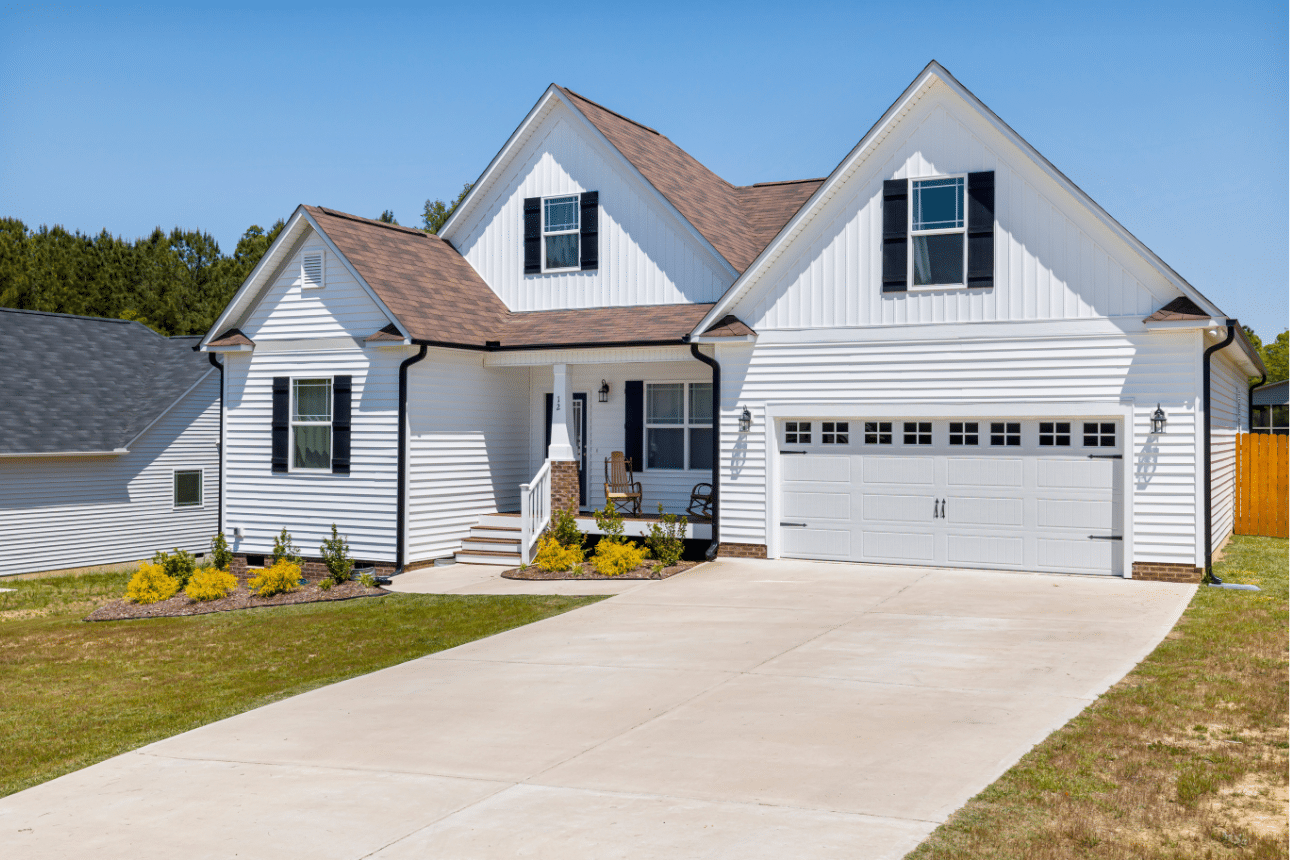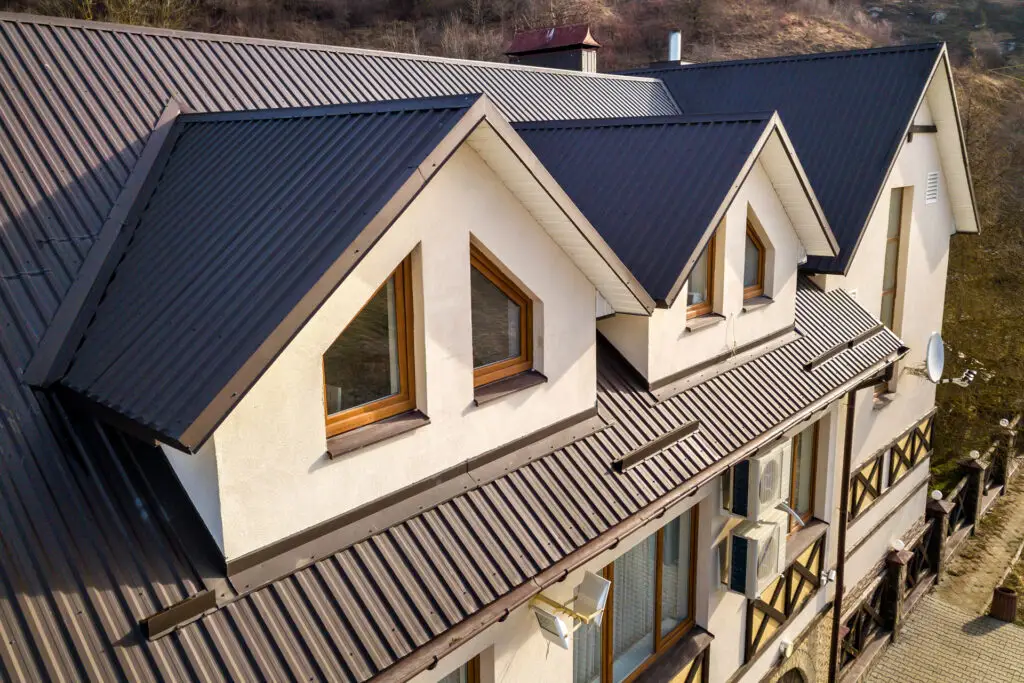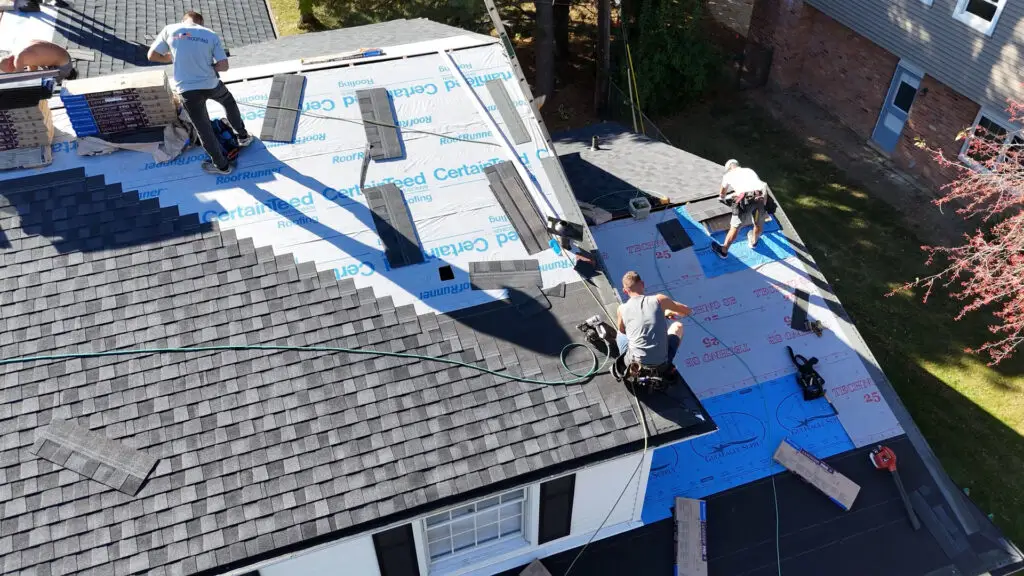Your home’s exterior does more than make a first impression—it serves as a critical barrier against the elements. When siding starts to fade, crack, or warp, it’s not just an aesthetic issue. Worn siding can lead to energy loss, moisture damage, and decreased property value.
Siding replacement is one of the most impactful home upgrades you can make. From boosting curb appeal to improving insulation and reducing maintenance, new siding can completely transform how your home looks and functions, both inside and out.
Let’s explore the top benefits of replacing your siding and how to tell when it’s time for an upgrade.
1. Instant Curb Appeal
One of the most immediate benefits of siding replacement is visual. New siding gives your home a fresh, modern look that stands out in the neighborhood. Whether you opt for bold color choices or stick with timeless neutrals, replacement siding can: cover up old stains, cracks, or weather damage; introduce updated textures or finishes; and improve symmetry and overall exterior design. Curb appeal isn’t just about looks—it also plays a big role in property value. A well-maintained exterior makes your home more attractive to potential buyers, increasing both interest and perceived value.
2. Better Protection From the Elements
Your siding is your home’s first line of defense against weather, moisture, pests, and temperature swings. Over time, even durable materials wear down, leaving your home vulnerable. New siding provides stronger seals to keep water out, greater resistance to wind, snow, and hail, and fewer gaps or cracks where insects and critters can enter. In Michigan’s climate, where freezing winters and humid summers are the norm, replacing worn siding helps prevent serious structural damage caused by water intrusion and pest infestations.
3. Improved Energy Efficiency
Older siding can be a major contributor to high utility bills, especially if it lacks proper insulation or has shifted away from the wall. Today’s siding replacement options are designed with energy efficiency in mind. Upgrading your siding can help add or improve insulation in exterior walls, eliminate drafts and cold spots, and reduce heating and cooling costs year-round. Energy.gov provides helpful guidance on how siding and insulation contribute to home efficiency. These improvements are especially valuable for older homes built without modern energy standards.
4. Reduced Maintenance
Faded paint, peeling finishes, and warped panels are more than just eyesores—they’re time-consuming and expensive to maintain. Newer siding options like vinyl or fiber cement require far less upkeep. Benefits include long-lasting color that won’t require repainting, resistance to mold, mildew, and pests, and fewer repairs and touch-ups over time. Low-maintenance siding lets you spend less time on chores and more time enjoying your home.

5. Higher Resale Value
Home improvement projects don’t always yield a return, but siding replacement consistently ranks among the top renovations for ROI. According to the Remodeling 2024 Cost vs. Value Report, homeowners typically recoup over 75% of the cost at resale. New siding signals strong home maintenance, enhances buyer interest through curb appeal, and boosts listing value and competitiveness. If you’re planning to sell soon, siding replacement is a smart, high-impact investment.
6. A Healthier Home Interior
Damaged siding can cause more than exterior problems—it can impact the air quality and safety inside your home. Cracks, mold, and trapped moisture behind the siding can lead to rot and poor ventilation. New siding helps prevent moisture buildup and mold, protects insulation and wall structures, and improves indoor air quality and ventilation. If your home feels damp, musty, or drafty, don’t overlook your siding as a possible culprit.
7. Modern Options That Fit Your Style
Siding materials and finishes have come a long way. Whether you prefer a rustic, traditional look or a clean, modern exterior, there’s a siding replacement option that fits your style and budget. Popular choices include vinyl siding in a wide range of colors and textures, engineered wood for a natural look with added durability, and fiber cement that offers a premium finish and fire resistance. Your siding isn’t just functional—it’s part of your home’s personality. A thoughtful choice can elevate your entire aesthetic.
When Is It Time to Replace Your Siding?
Not sure if a complete siding replacement is right for you? Your home will usually give you clues—it’s just a matter of knowing what to look for.
Common signs of siding failure include:
- Cracks, warping, or loose panels – These aren’t just cosmetic issues. When panels shift or pull away from the wall, they can expose your home to moisture and pests.
- Faded, peeling, or outdated color – Discoloration or uneven fading can signal UV damage or material breakdown. If paint no longer adheres well or the color is dull, it might be time for a full replacement.
- Water stains or signs of rot – Water that sneaks behind siding can cause mold, mildew, or even rot in your sheathing and insulation. Look for bubbling, soft spots, or dark patches that don’t dry out.
- Rising utility bills – If your heating and cooling costs have crept up without another explanation, poor siding insulation or hidden damage could be the culprit.
- Increased outdoor noise – If it suddenly feels like you can hear every car or conversation from outside, your siding might not be insulating as effectively as it should.
- Visible seams or shifting panels – Movement in siding often points to moisture infiltration, foundation settling, or poor installation, all of which can shorten the siding’s lifespan.
Still not sure? Routine inspections from a professional contractor can help spot early warning signs before they become major problems. Replacing your siding at the right time can save you money on repairs, prevent energy loss, and keep your home structurally sound for years to come.
And if you’re also noticing roof-related issues—like leaks, granule loss, or sagging—check out our roofing inspection guide for tips on evaluating your entire exterior envelope. Many homeowners choose to tackle both projects together for a more cohesive update and better long-term protection.
Call BCM Roofing for Siding Replacement in Michigan
Siding replacement is one of the most transformative home improvements you can make. Whether your goal is energy efficiency, visual impact, or better protection, BCM Roofing is ready to help. We serve homeowners throughout Michigan with expert siding inspections, material recommendations, and skilled installation. Our team will guide you through every step to ensure your home is protected—and looks amazing—for years to come. Contact us today to schedule your free siding inspection and get personalized advice tailored to your home’s needs.
FAQs About Siding Replacement
How long does siding replacement take?
Most siding projects take between 1–2 weeks, depending on the size and shape of your home, the type of siding you choose, and weather conditions. If your project includes removing old siding or making structural repairs underneath, that can add a few extra days. At BCM Roofing, we create a clear schedule upfront and communicate throughout the process so you always know what to expect.
Is siding replacement worth the investment?
Yes—siding replacement consistently ranks as one of the highest-return home upgrades. Beyond boosting curb appeal, it improves insulation, reduces maintenance costs, and helps prevent costly repairs caused by moisture or pest damage. When done well, it adds immediate visual impact and long-term protection, making it a smart investment whether you plan to sell or stay.
How do I know if I really need new siding?
Look for signs like warping, cracking, bubbling, or loose panels. If your siding is faded beyond repair, has visible mold or mildew, or contributes to high energy bills, it may no longer be doing its job. If you’re unsure, a professional inspection can assess whether repairs are possible or if full replacement is the better long-term option.
Can siding be replaced in the summer?
Summer is actually one of the best seasons for siding replacement. The warm weather and low humidity create ideal conditions for installation, helping adhesives set properly and minimizing delays. Plus, completing the project in summer ensures your home is well protected before fall rain or winter snow arrives. Just be sure to book early, as contractor schedules fill up quickly during peak season.
Will new siding help with noise reduction?
Yes, especially if you add insulation during the replacement. New siding—particularly fiber cement or insulated vinyl—can significantly reduce exterior noise from traffic, neighbors, or weather. Homeowners often notice a quieter, more comfortable living space after upgrading.


